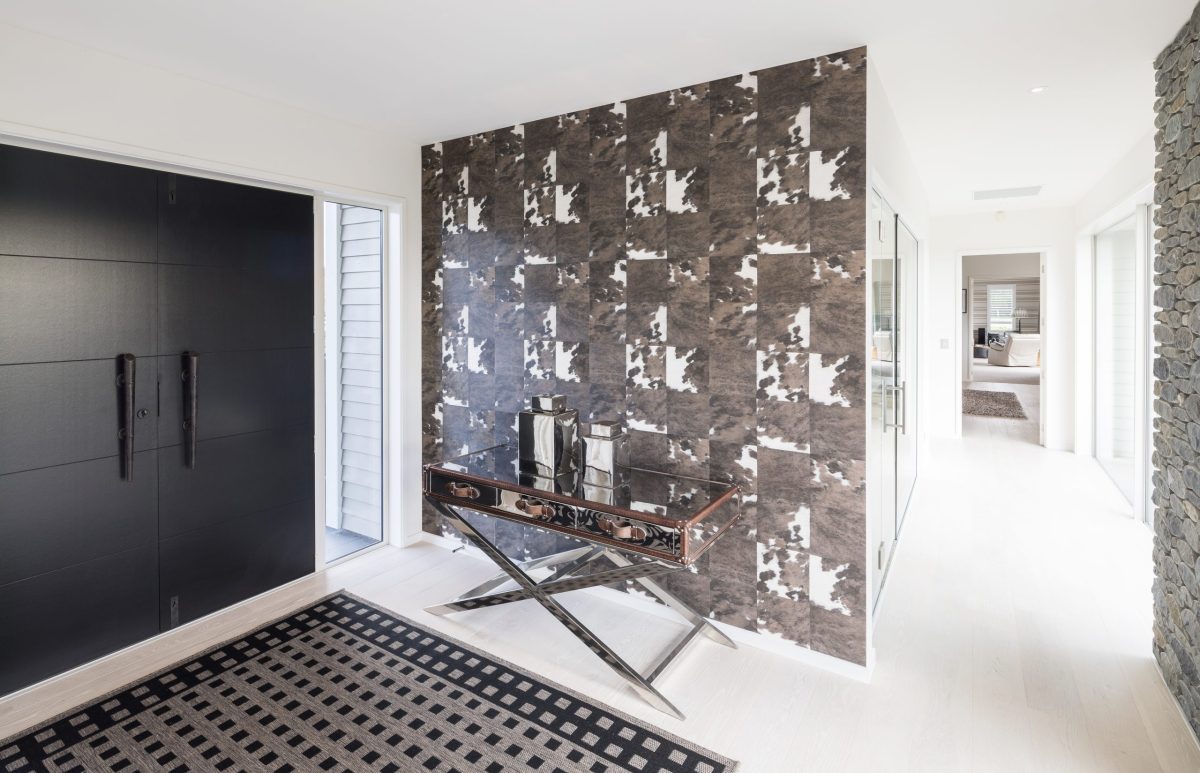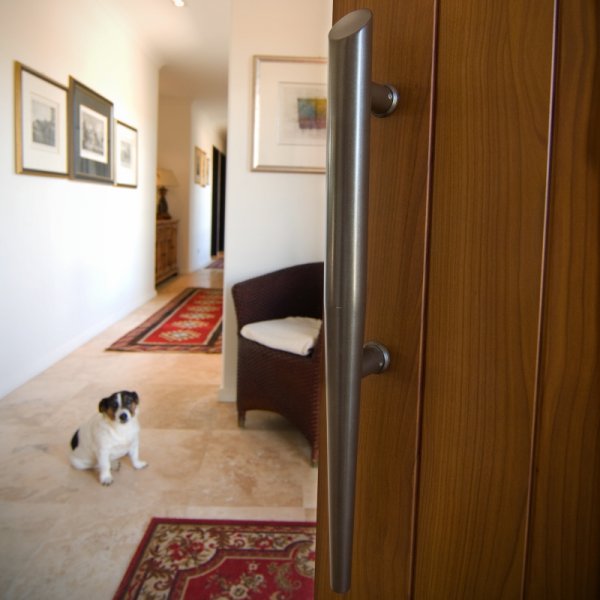How to maintain your front door and handle.
Front doors and their handles will require some maintenance to stay looking good and perform well over a long time. Here is a basic outline on the minimum you need to do to care for and maintain your front door and handle.
I have divided it into door material types to make it easy and have tried to keep it as simple as possible, but still thorough – no one has extra spare time nowadays for excess work around their home!

Aluminium powder coated front doors
Although these are sometimes marketed as ‘low-maintenance’, there are still a few steps required. To meet the warranties around powder coat finishes, you still need to carry out some form of care.
Quick fix: when I’m washing our exterior windows, I use the Raven Water Brush from Bunnings, which includes a simple soap, and simply include the door in the clean. You just connect the hose to the brush and scrub the joinery around the door and then wash down the whole door.
The brushes and soap lift any dried dust or salt spray and the running water washes it all off to ensure there are no dirty after-runs. If your door is flat, you can use the back of the Raven Water Brush to squeegee the water droplets off, otherwise just leave it to air dry.
You need to do this every 6 months or more in coastal areas.

Solid timber front doors – Stain finish
These doors should be pre-finished in a ‘film-forming’ finish rather than a stain or paint. This only needs maintenance every 3-7 years depending on how sheltered the door is. However, manufacturers of such finishes still say you should carry out maintenance before the finish cracks or breaks open, otherwise the timber could absorb moisture causing swelling or even worse, rot.
Keep an eye out for signs of wear around the handle, or on the bottom half of the door where it tends to get more direct sunlight or rain.
Firstly you’ll need to get a pot of top coat in the same finish as your current door – enough for 2 coats which is normally for 5m2, unless you have a really big door. Of course, always follow the manufacturers instructions, but a basic outline is: wash down door with sugar soap and lightly sand with 240-320 grit to roughen surface, leave to dry 48 hours and then apply 2 top coats. More details on the Sikkens (recommended) product can be found here.
Apart from what, you’ll need to give it a wipe down with a damp cloth every few months to remove dust and grime. I probably wouldn’t use the Water Brush trick outlined earlier as that may be a bit hard on the finish and solid timber.

Solid timber front doors – paint finish
Apart from repainting once the paint starts to lift, I would recommend a regular clean at the same time as you do the outside windows, using the Raven Water Brush as described above.
Composite fibreglass-skin doors – paint finish
As above with painted timber doors, I would recommend a regular clean at the same time as you do the outside windows, using the Raven Water Brush as described above.

Front door handles and hardware
Stainless steel hardware can discolour or look like it is rusting very early on. Don’t be alarmed. Its not the stainless as this is almost impossible to rust. It’ll be dust, particularly if your house has just been built or you’re near building sites and dusty areas, combining with salt spray or acids in the rain or atmosphere causing the dust to rust and create a layer of discoloration on the steel. Use a stainless steel cleaner or metal polish such as ‘Blue Magic’ and it’ll easily take this layer off.
Lacquered hardware like Brushed nickel or bronze or powder coated hardware simply needs a regular wash with sugar soap or the Raven Water Brush as described above under Aluminium Front Doors.
If your handle or lock becomes squeaky or ‘gritty’ when opening, try spraying CRC into any crack or crevice you can see. if this doesn’t work, it may be that the fitting of the handle needs tweaking, which is outside the bounds of this article! Try contacting the fitter, a locksmith or the hardware manufacturer for further specialist advice.

